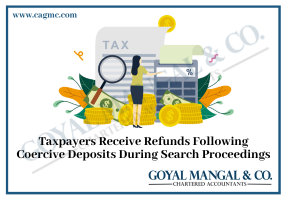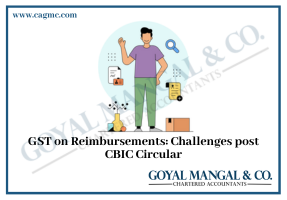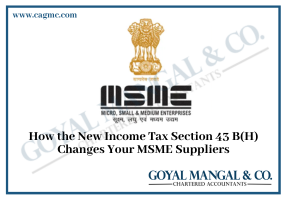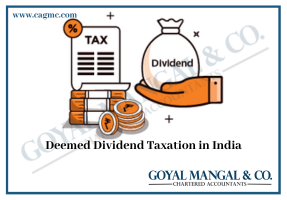 Introduction
Introduction
The system of taxation is most important for a nation’s economy which keeps revenue consistent manages growth in the economy, and fuels its industrial activity. India’s three-tier federal structure consists of the Union Government, the State Governments, and the Local Bodies which are empowered with the responsibility of the different taxes and duties, which are applicable in the country. The government of India is authorized to levy taxes on individuals and organizations according to the Constitution. This article talks about the difference between cess and surcharge.
|
Table of Contents |
Tax
A tax may be defined as a monetary burden rested upon individuals or people with property to help add to the government’s revenue. Tax is, therefore, a mandatory contribution and not a voluntary payment or donation that one decides on one’s own. It is a payment exacted by the legislative authority. It may be a direct tax or an indirect tax. Revenue growth which may be a little faster than GDP (Gross Domestic Product) can result from revenue mobilization with an effective tax system and measures.
The government uses this tax to carry out functions such as:
- Social welfare projects like schools, hospitals, housing projects for the poor, etc.
- Infrastructure such as roads, bridges, flyovers, railways, ports, etc.
- Security infrastructure of the country such as military equipment
- Enforcement of law and order
- Pensions for the elderly and benefits schemes for the unemployed or the ones below the poverty line.
Cess
A cess is a form of tax levied by the government on tax with specific purposes till the time the government gets enough money for that purpose. A cess is imposed as an additional tax besides the existing tax. For example, the Swachh Bharat cess is levied by the government for cleanliness activities that it is undertaking across India. The general public pays a cess and it adds to their basic tax liability paid as part of the total tax paid.
Various types of Cess levied by the government
The government levies different cesses on services it provides to the public. Some of them are as follows:
Education Cess: Collected by the government to provide mandatory free standard primary education to all citizens.
Health Cess: Proposed in 2018 by former finance minister Arun Jaitley to meet the health requirements of below-poverty-line families.
Road Cess or fuel Cess: For maintenance of roads and infrastructure.
Clean energy Cess: It is a carbon tax on the production and import of coal, lignite, and peat, operating on the “polluter pays” principle.
Krishi Kalyan cess: It has been introduced to provide additional support to farmers for agricultural activities.
Swachh Bharat cess: Introduced in 2014 with the objective of delivering a clean India, it is levied at 0.5 percent on all taxable services to fund Swachh Bharat initiatives.
Surcharge
A surcharge is discussed under Articles 270 and 271 of the Indian Constitution. A surcharge is an increase in any of the duties and taxes referred to in Articles 269 and 270. Surcharges have been imposed even before the constitution came into force. A surcharge was recommended for the first time in the report of the Joint Committee. The surcharge is an additional tax burden to those, whose income exceeds the specified limits. Generally, the surcharge is levied for a certain period of time.
The similarity between Cess and Surcharge
- The similarities between a cess and a surcharge are that both levies are exceptions under Article 270.
- The revenues collected from both these sources are at the exclusive disposal of the Union Government.
Difference Between Cess and Surcharge
Cess is levied for a pre-determined earmarked purpose while a surcharge can be appropriated for any public purpose. This difference between a cess and a surcharge is drawn in Constitution, which means that the two terms are not interchangeable. The cess collected will be used to introduce and implement new schemes of the Government of India. The main issue with respect to the cess is no transparency in the usage of cess and the taxpayer pays it in the faith of the cess amount being used for health, education, etc. Irregularities in the use of Cess funds can be observed when it is not used for a specific purpose. Therefore, cess should not be made as the permanent source of revenue for the Government as it is created to fulfill a present purpose only. Whereas, Surcharge will provide more revenue to the Government apart from what is earned from levying taxes.
Conclusion
For the introduction and implementation of new schemes of the Government of India cess is used. The main issue with respect to the cess is no transparency in the usage of cess and the taxpayer pays it in the faith of the cess amount being used for health, education, etc. Irregularities in the use of Cess funds can be observed when it is not used for a specific purpose. Therefore, cess should not be made as the permanent source of revenue for the Government as it is created to fulfill a present purpose only. Whereas, Surcharge will provide more revenue to the Government apart from what is earned from levying taxes. However, compliance should be properly checked and proper mechanisms should be used to prevent tax evasion. They ensure that the taxation system is more progressive and there will be less burden on the poor people.







